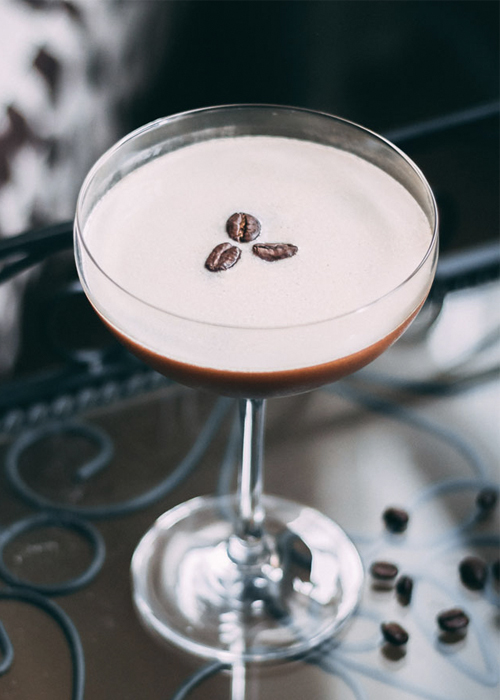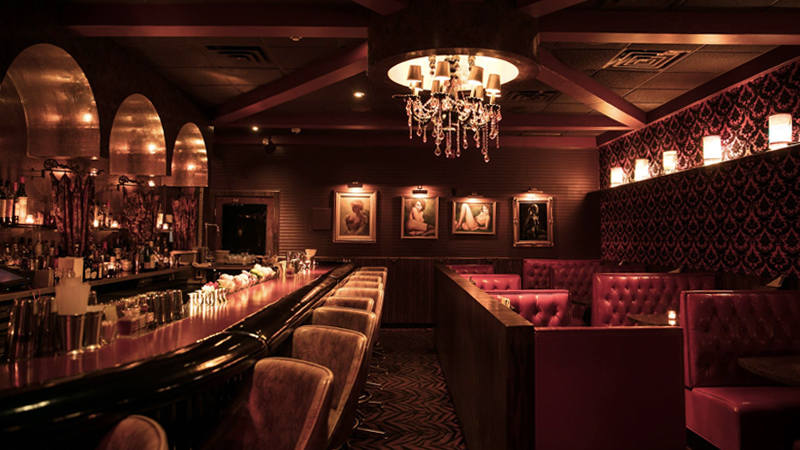Sother Teague, the beverage director at New York City’s Overthrow Hospitality, can pinpoint the moment it happened: It was late summer, 2019. He’d flown to New Zealand for a cocktail event, and noticed everyone there was drinking Espresso Martinis. “Four, five, six, that’s all they’re drinking,” he recalls. “Three out of five people had an Espresso Martini in their hands.” He concluded that New Zealand was approximately 15 years behind the U.S. But when he touched down in New York five days later, they were everywhere.
They are still everywhere. They are, if anything, more everywhere. This is despite the fact that Espresso Martinis are, as one anonymous bartender put it to Grub Street, “annoying.” The trouble is not that Espresso Martinis are bad — they are popular, in large part, because they are good — but rather that they have become so oppressively dominant. We are on year three of the reign of the Espresso Martini. The Espresso Martini shows no signs of slowing down. It is easy to trace when trends start, and much harder to say when they end, because if they existed, someone, somewhere, is still wearing or watching or drinking them. The old thing is simply eclipsed by a new thing, and then the new thing becomes old, and the cycle repeats, and we keep looking forward.

The Espresso Martini was new, the first time, in the mid-1980s, when London bartender Dick Bradsell concocted one for an anonymous model who’d requested “something to wake me up, then fuck me up.” (Contrary to popular lore, the model in question was almost certainly not Kate Moss or Naomi Campbell, who would have been, respectively, approximately 9 and 13 at the time.) It gained steam throughout the ’90s, and then, like the Cosmopolitan — another sweet vodka-based ’90s sensation — receded politely with the great cocktail renaissance of the early aughts. “The Cosmo was the one out of the two of them that caught fire first,” says Nico Diaz, head bartender at Ranstead Room in Philadelphia. “The Espresso Martini was like a little cousin.” Maybe Espresso Martinis hadn’t burned as brightly as Cosmos, but then, they also hadn’t burned themselves out.
No one I talked to had a great answer for what was going on with Espresso Martinis for most of the 2000s and 2010s. They existed; you could drink them. In 2016, Grub Street wondered if the Espresso Martini could “make a high-class comeback,” suggesting that it hadn’t yet, but that at least a handful of innovative bartenders saw a future where it could. This turned out to be an understatement. “I don’t think there’s been a drink that has come out and gone away and come back with such fervor as this one,” marvels Teague. The question, by now, is how long can it last?

There is reason to believe the answer is “a while.” Plenty of drinks have a moment and then fade, for one reason or another. We might all be drinking more White Negronis, suggests St. John Frizell, owner of Brooklyn’s Fort Defiance, but White Negronis depend on Suze, and Suze is hard to find. Sometimes, the issue is the name, says Teague, pointing to the Harvard Cocktail, a Manhattan riff made with Cognac instead of rye whiskey. The problem is not the drink or the ingredients, he suspects, but the Ivy affiliation. “Maybe it was a good name at the time,” he says. “It’s upper crust-y — I get it.” But in this economy? “It doesn’t make you want to splash ‘Harvard Cocktail’ all over the place.”
The Espresso Martini, on the other hand, checks all the boxes of a modern classic cocktail, according to Robert Simonson, whose forthcoming book, “Modern Classic Cocktails,” lays out the criteria: It travels beyond the bar where it was invented, it inspires riffs and variations, bartenders approve of it, and people like drinking it. Diaz, at Ranstead Room, has one more: “Four ingredients or less,” he says, unequivocally. “No esoteric compounds, syrups, or difficult-to-source ingredients.” Any adept bartender should be able to make it, using what’s available at any well-stocked bar. (For Espresso Martinis, this is slightly complicated: While it’s true many bars aren’t set up to pull fresh espresso shots, as the original recipe requires, most bartenders aren’t using the original recipe and instead turn to cold brew for the coffee component.) But there are a lot of “modern classics,” and most of them have not — may never! — have a moment when they reach Espresso Martini heights.
Say what you will about Espresso Martinis, there is nothing else in the zeitgeist quite like them. “It does something that no other cocktail does,” chuckles Frizell. “It’s a caffeine delivery system.” It is a functional beverage, a grownup Red Bull and vodka. “It’s a certain part of the night, your energy is starting to lag a little bit, and you have a lot more partying to do,” he says. “That’s when the Espresso Martini really starts to show up.”
Still, it won’t last forever. The trend will wane, as trends always do. Eventually, this moment of ’90s nostalgia will fade, and the mood will shift, and the desperate hedonism of the early 2020s will begin to feel old. It will happen so slowly most people won’t notice; the conversation will simply shift to something else. Diaz suspects Espresso Martinis will follow Cosmos — not the toast of the town, but perpetually present. Any bar can make you one. Any drinker knows what one is. I ask Diaz when he imagines this happening. “I mean, to be honest, I’m drinking coffee right now,” he tells me. “Who doesn’t love coffee?” And given the popularity of coffee as a flavor, there are surprisingly few competing coffee drinks.
Frizell is himself an Espresso Martini agnostic, but he sees the possibility: Espresso Martinimania could usher in a new generation of coffee experimentation. “Five years from now, there could be an explosion of coffee drinks,” he says. “There might be a long tail to this thing.” This future should be heartening, even to the haters. The continued passion for espresso means that bartenders will keep iterating. “They’re going to come up with their own thing,” Frizell says. “And when someone orders an Espresso Martini, they’ll say, ‘well, we could make you one of those. But would you like to try this instead?’”
